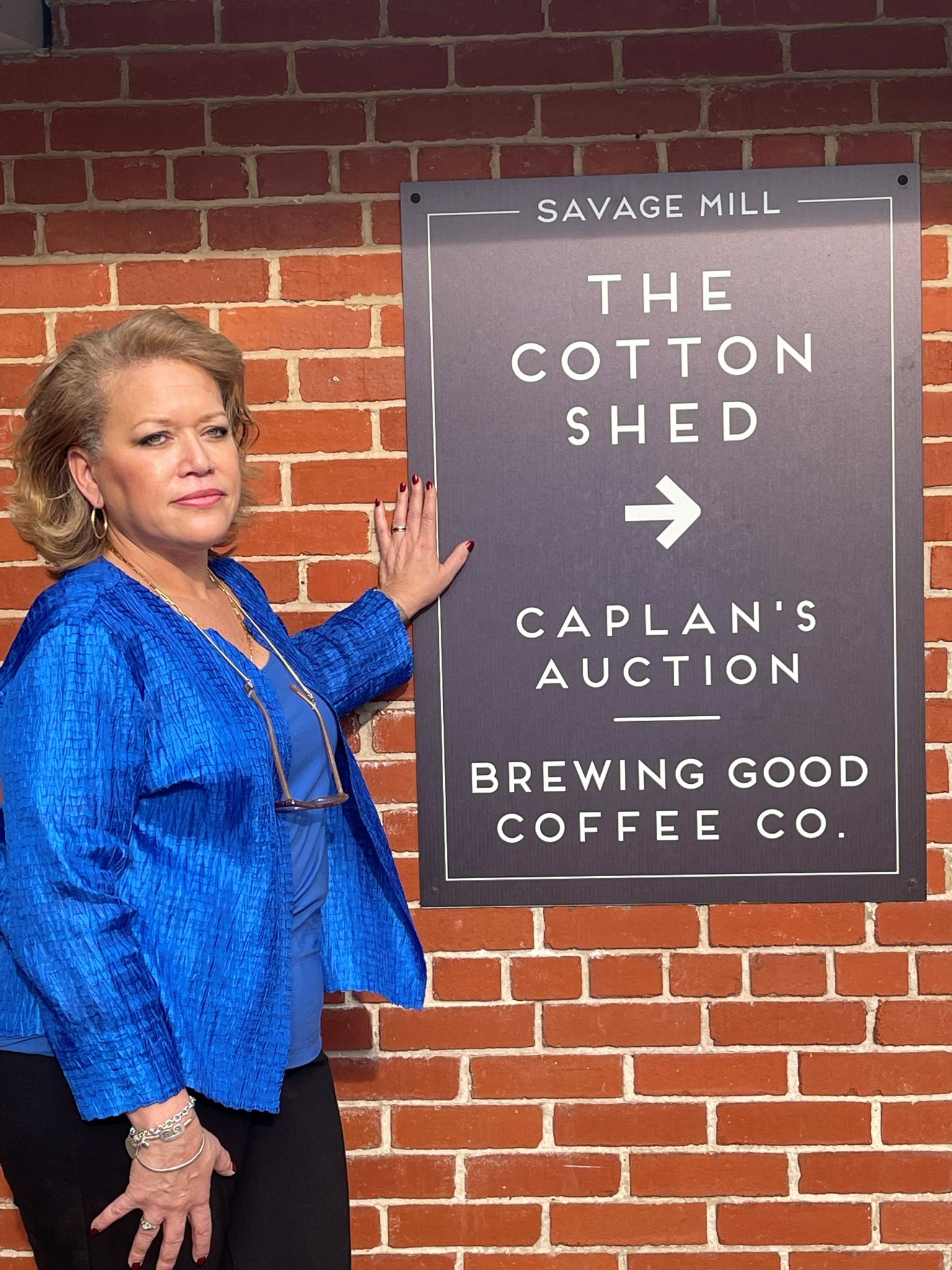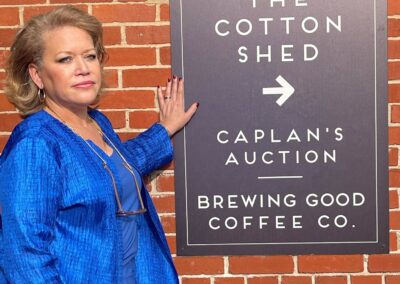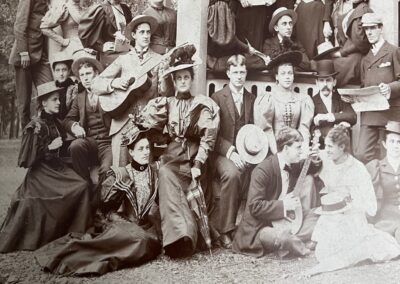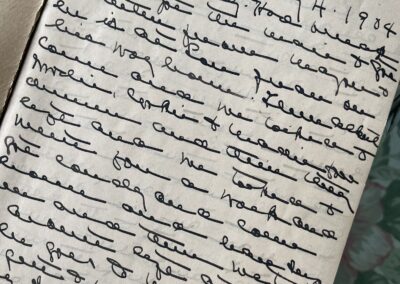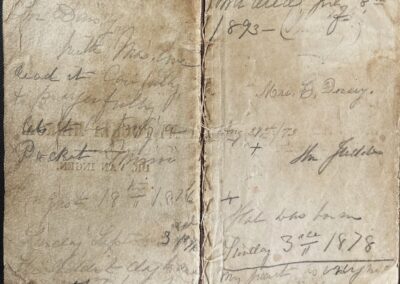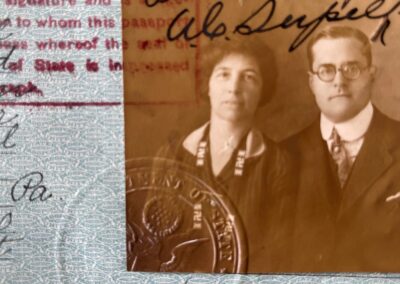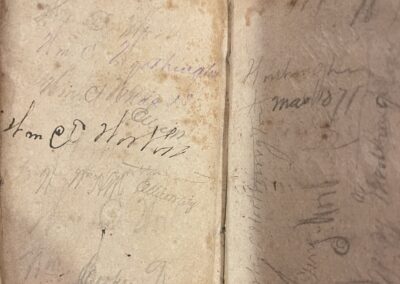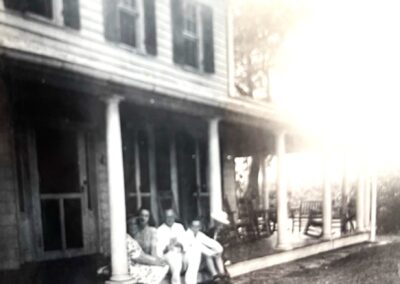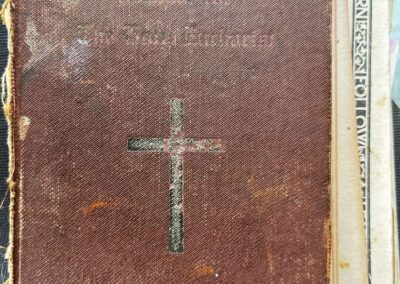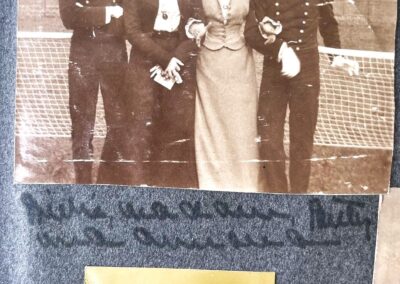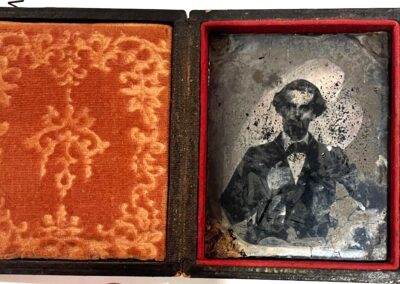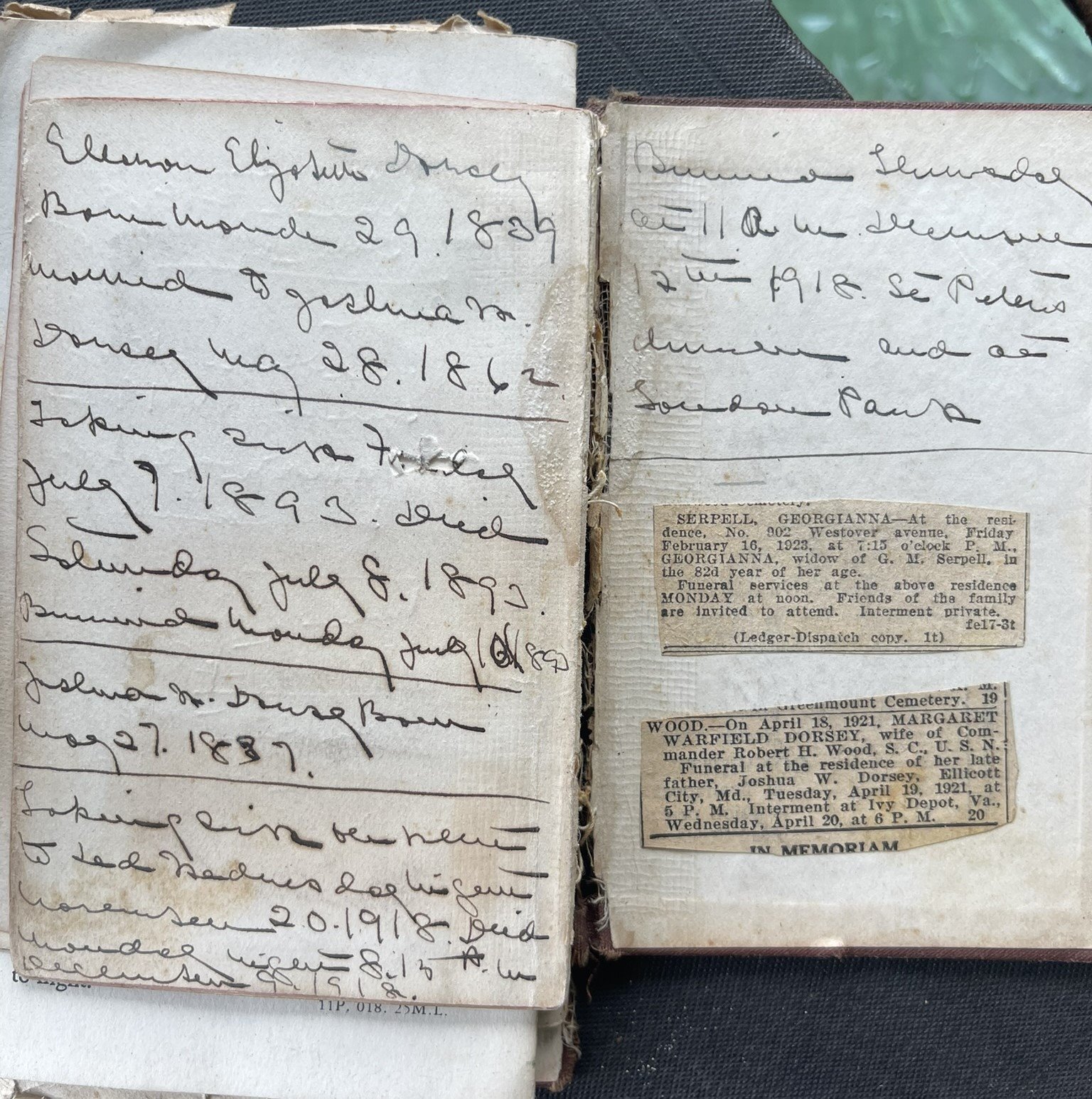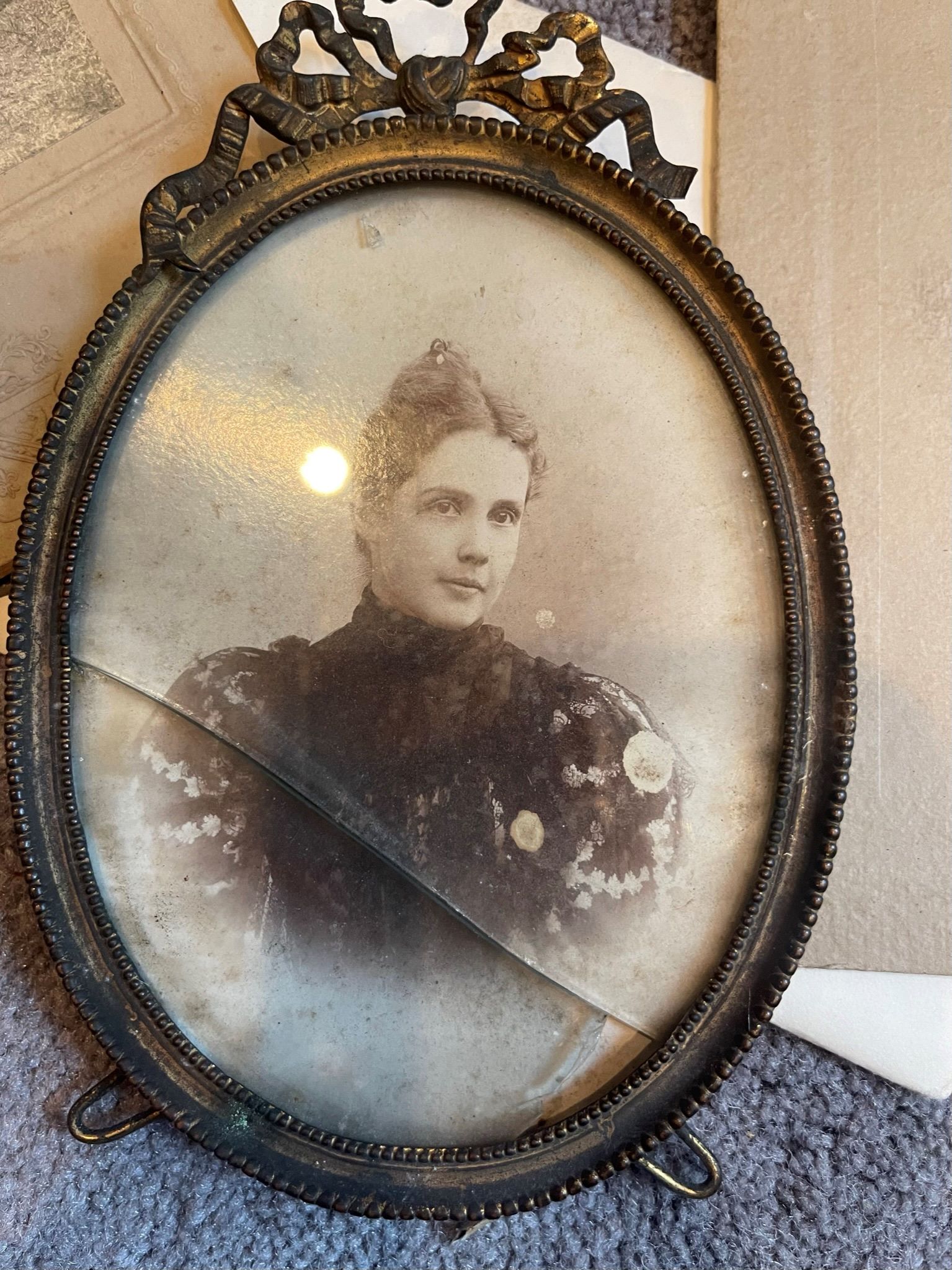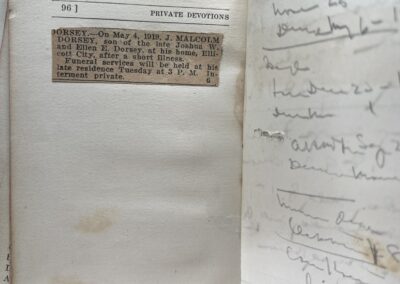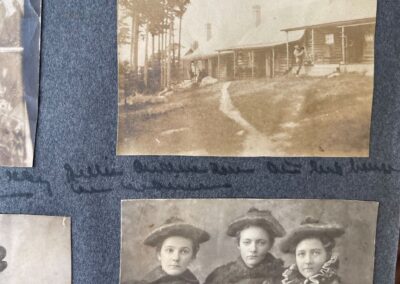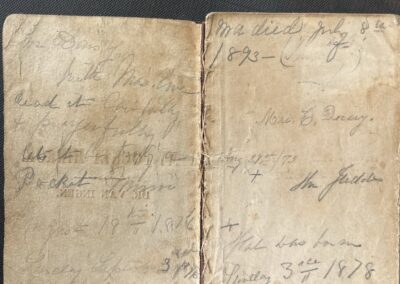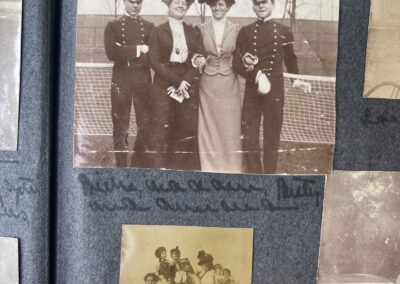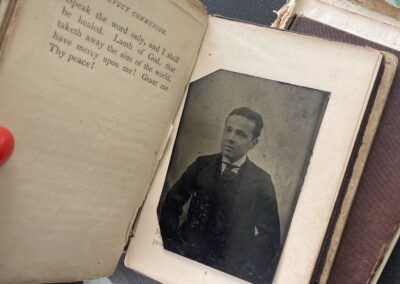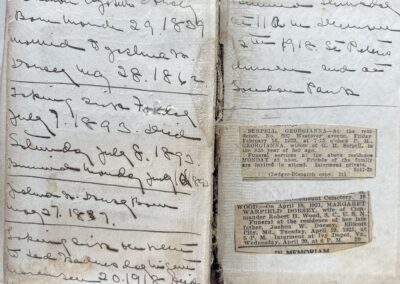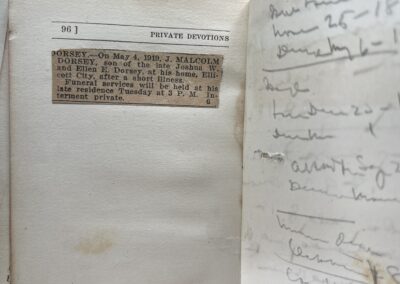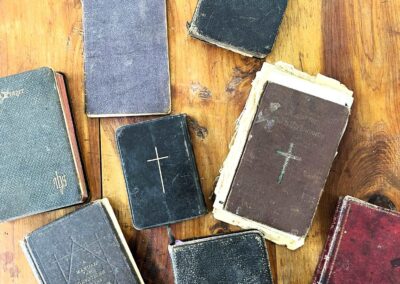Spent this rainy Philadelphia weekend sorting through three of the seven boxes of Richland Farm books and ephemera acquired at Caplan’s auction house in Savage, MD.
We’d already, in March, participated in the online auction for the furnishings and collectibles from Richland Farm in Clarksville, MD, the agricultural headquarters for the enslaved people from three adjoining plantations, namely Richland Farm, Hayland Farm, and Walnut Grove. These three plantations, inclusive of ~1,000 acres of farmland, were farmed by enslaved people since prior to the Revolutionary War and until the abolition of slavery in Maryland in 1864.
I’d hoped that the ephemera auction would produce records which would enlighten us to the personal lives of the people who’d owned the Richland Farm over these last 300 years, provide access to the records of their respective estates, and insight into the estate transactions which may include the buying and selling of human beings.
Well, okay (okay!), we KNOW it included human beings, at least though 1864, when Maryland abolished slavery.
I’ve also learned, via oral interviews, that formerly enslaved people in this area often continued to work for their former enslavers following the abolition of slavery. By plotting records of enslavers prior to 1864 and then after 1864, and also the new emergence of census records for African Americans in 1870, I have demonstrated that those who were enslaved in the area of Sheppard Lane in Clarksville, MD remained geographically consistent before and after abolition. Yes, of course, some dispersed. But the lives I’m tracking remained, alas assembling family units and homes as freed men and women. Hallelujah! (almost)
Someone will certainly ask: ‘Why does she care to acquire the collections of the descendants of the enslavers’?
The answer is clear: in order to repair the fractures of slavery, we need to track the movements and transactions of humans. In order to do that for enslaved people, we need to track them as property – along with the chairs, and the beds, and the horses, and the wagons ….. I’m tracking chattel records, thereby tracking my ancestors, and those of other African American descendants of enslaved people.
In order to track MY people, I need to track YOUR people. That’s how this system was setup. I didn’t invent the rules, I’m simply following them. I hope this helps someone.
So, here I was, at Caplan’s auction house in Savage, Maryland, surveying ‘lots’ (pre-packaged boxes) of ephemera. Ephemera is the name for collectable paper items such as old postcards, letters, or old magazines. These boxes also included books and photographs.
For this onsite evening auction, it was required that we buy boxes of material without the ability to pick and choose the contents of the box. We were given the opportunity to preview, of which we took full advantage. If you liked one thing in the box of 30 random items, you needed to buy the entire box. As a result, I acquired lots of ‘stuff’….80 year old lipstick cases, a collection of buttons, hat pins, 90 year old bubble gum (I kid you NOT!)…..but also wonderful assortments of tintype and daguerreotype photos tucked into the pages of small prayer books, beautiful letters announcing engagements and sad letters informing of illnesses and death. I’m amazed that the number of prayer books (photo below) which include the recordings of birth and death, and news clippings of the same. Letters to and from, and photographs of the members of Maryland’s founding families – Worthington, Dorsey, Warfield, Bowie, etc.
I also secured two photo albums / scrapbooks with handwritten identification of those whose images adorn the pages and church-clapped my hands when Eleanor Elizabeth Watkins Dorsey’s photo appeared on several pages. She had been escorted by great great grandfather Oliver on that fateful date in 1848 when he made his escape from enslavement. He referred to her as ‘Miss Lizzie’.
It was Lizzie who, as a young girl in 1848, asked her family if she could remain back to ride to the camp meeting on horseback rather than in the family’s carriage. Her wish was granted, and Oliver was asked to remain back as her escort, as he had frequently done.
Alas, this gave 16 yr old GGGrandfather Oliver access to the home (Richland Farm, where he served as the family’s waiter) while the family was away, and the opportunity to prepare himself for the escape. I’d read so much about her in the memoir, and now, here she is, all grown up and in these photo album pages with her husband and children.
On the evening of April 5 at Caplan’s auction, I was accompanied by a Washington Post photographer, as they were preparing to run a story on the legacy of Richland and our experiences as descendants of its enslaved people.
It wasn’t lost on me that the location was known as ‘SAVAGE’, the mill had been producing COTTON, and the current use was for the purpose of AUCTIONS. Phew! It was almost too much.
I sat in the auction gallery with my bidder’s number printed on a tall slip of paper and prepared to bid. The photographer took photos. Other regular bidders were curious about me and the photographer and inquired, to which the photographer responded that she was photographing a bidder who held special interest.
It was a friendly environment. The Caplan’s people were supportive and understood that I didn’t have the experience of their regulars, extending patience when they needed to remind me to share my bidder’s number upon ‘winning’ an item.
The Washington Post photographer said she’d wished I had been more demonstrative with my bids – raising my hand with more vigor such that photos would have been more captivating. I’d followed suit of my fellow bidders, who were reserved and cautious, giving the slightest indication of interest (almost secretive).
In the end, we walked away with almost everything we’d wanted, sans a Theodore Roosevelt signed item and the bible of Joshua Dorsey.
It took me 3 months to get around to perusing this haul, box by box…and I’m delighted with the experience and the result.
